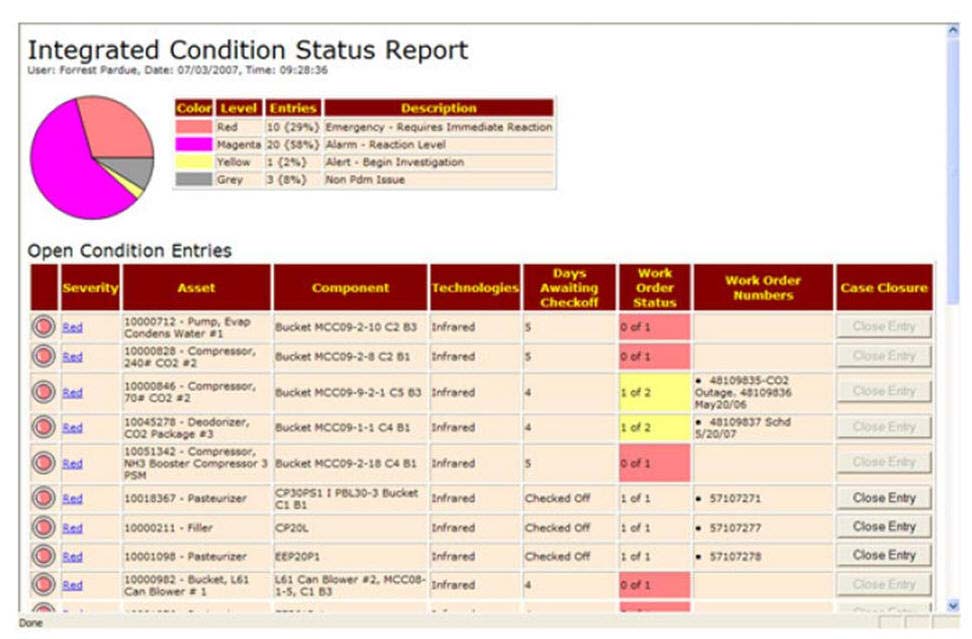Management
Many industrial plants have technically proficient predictive maintenance programs
using technologies such as vibration analysis, IR thermography and motor testing.
However, those same plants often struggle with knowing how well condition monitoring
results are being used to drive maintenance execution.
One measure of condition-based maintenance effectiveness is trending the time from
problem identification to work order closure and confirmation.
All too often a plant's condition monitoring team (or service contractor) may report
on the same equipment health problem time after time for many months, yet the maintenance
organization does not respond until the equipment actually failed. Successful condition-based
maintenance organizations create accountability for resolving condition-based work
requests. For example, reliability engineering at the Indiana power plant of a major
metals producer set a 2008 goal to drive the average time for completing condition-based
work requests from 120 days down to less than 90. At Eastman Chemicals in Kingsport,
TN, operations and maintenance managers receive monthly reports that compare the
condition-based work performance in each of their areas. Both organizations use
Tango™ Web Service to produce and communicate those metrics to a broad plant
audience.
Tango™ Web Service integrates the results from all condition monitoring activities
in a single database and communicates the status of condition-based work requests
through a web browser. Having all the results, including those coming from service
contractors, in a single web-hosted database makes it easy to create and distribute
condition-based work metrics.
The metrics begin with the Integrated Condition Status Report (ICSR). Users can
sort to show the highest severity or criticality issues at the top, and planners
can interact with the report to show that work orders have been issued or completed.
This interaction makes it convenient to update work order status, and that in turn
provides current information every time a user opens the ICSR. The "Days Awaiting
Checkoff" column provides an aging statement showing how long each identified problem
has been open; the "Work Order Status" and "Work Order Numbers" columns show if
work orders have been generated, and the reference number in the plant's CMMS. The
broad distribution of this status information helps drive the accountability mentioned
earlier. Once all the condition driven work orders for an asset component have been
closed, the "Close Entry" button alerts users that it's time for a follow up measurement
to confirm the problem has been eliminated.

- Number of condition entries opened each month
- Number of condition entries closed each month
- Average number of days to close condition entries, by month
- Number of condition entries that remained open on last day of each month
For example, in the Condition Entry Analysis, condition-based maintenance effectiveness
is in good shape at this plant. The trend for time to close condition entries shows
that the plant is consistently responding to condition-based work requests within
one to two months. Filtering the analysis by discrete areas of maintenance responsibility
would be helpful in identifying outstanding team performance or further opportunities
for improvement.